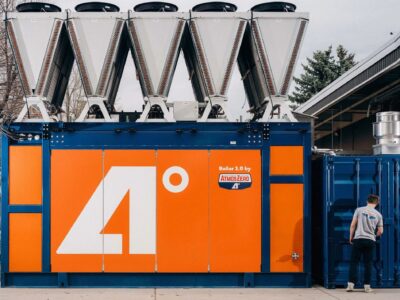The United States is the world’s largest producer of meat chickens, but in mid-April the Department of Agriculture issued a report scaling back their 2020 prediction for American chicken production. There were significantly less demands than usual from overseas markets and food service. By early spring, the poultry market had already suffered a drastic hit from the supply chain disruptions resulting from the COVID-19 pandemic. As production continues to slow, the big chicken industry is dramatically reducing their populations. Meanwhile, small independent chicken farmers like Dave Jordan at Two Wash Ranch in Pyramid Peak, Arizona, are experiencing a surge in demand and unlike their larger counterparts, they are able to move quickly to meet the changing marketplace.
American chicken farmers fall into two main groups. Large-scale chicken farmers, which comprise more than 90 percent of production in the U.S. and raise birds under contract for corporations like Tyson and Perdue, and depend on the bidding of these corporations to modify their production. Small farmers like Jordan make up the remaining 10 percent, bringing in around 20,000 chickens a year, which is no small feat for an independent farmer.
It’s not easy keeping a small farm out of the red. At Pyramid Peak, just an hour north of downtown Phoenix, Dave Jordan’s business model was wound tight. He was offering seven sizes of chickens to Phoenix restaurants every week. Under slanted roofs in the hot desert sun, he kept around 6,000 birds at any given time, birds that would eat $3,000 worth of feed every week. With only one full-time employee and four part-time workers, he would raise the birds from infancy to slaughter, driving the freshly harvested chickens to Phoenix’s top restaurants, usually 50 – 70 birds a week. A process that took Jordan over a decade to get right, unfortunately fell apart overnight on March 17 when Phoenix Mayor Kate Gallego announced all restaurants would be closed for dine-in service due to the spread of coronavirus. It didn’t take long for nearly every one of Jordan’s clients to cancel their orders.
“When it first happened, I was just in this dreamworld,” Jordan said. “Because I would come out my door, the sun rose, the chickens were all still there, the chickens were just as hungry. The days were just as long. Nothing changed.” He had a $20,000 feed order about to arrive at the ranch, to cover thousands of birds still growing, and hundreds ready for slaughter. He had to think fast.
As logic would have it, people must eat and as they returned to their underused home kitchens, many sought to recreate what they’d experienced in Phoenix’s most popular restaurants, that perfectly roasted chicken. Jordan anticipated they would be accustomed to the larger birds sold in supermarkets, so he adjusted his approach and is now selling upwards of 500 birds a week, the majority through a popular urban farm’s store, with 175 to 200 sold through a butcher.
Since COVID-19’s disruption of U.S. poultry, independent chicken farmers like Jordan have risen to the challenge. While the landscape remains uncertain, with restaurants remaining at half-capacity or closed down altogether, and grocery store shelves unpredictably stocked, Americans are increasingly turning to small farms. Throughout the country, independent producers are experiencing growth as they pivot to meet the needs of a changing world.





